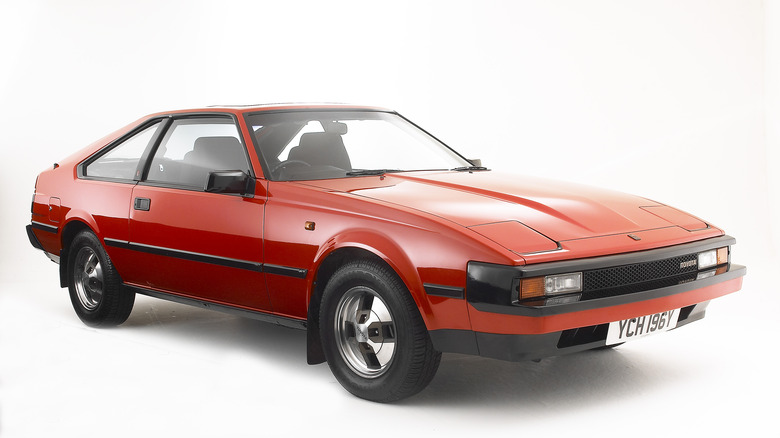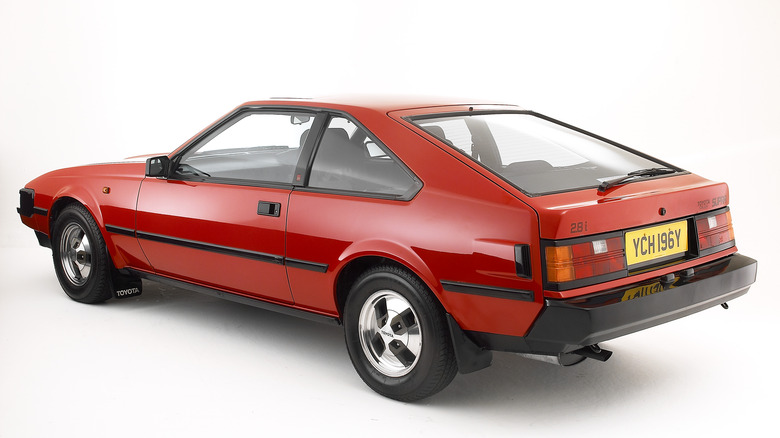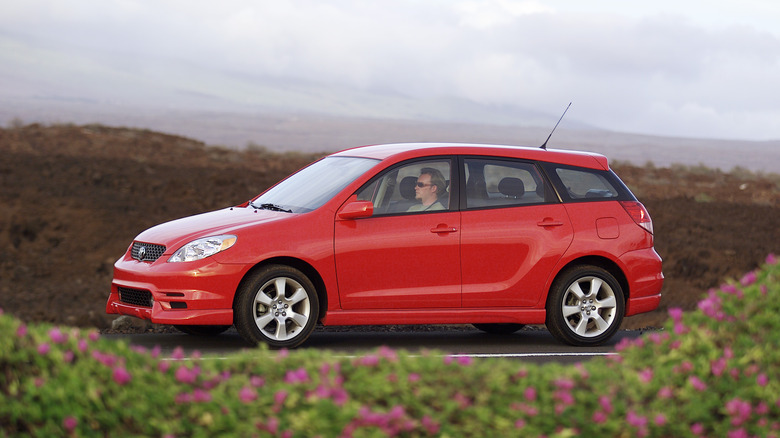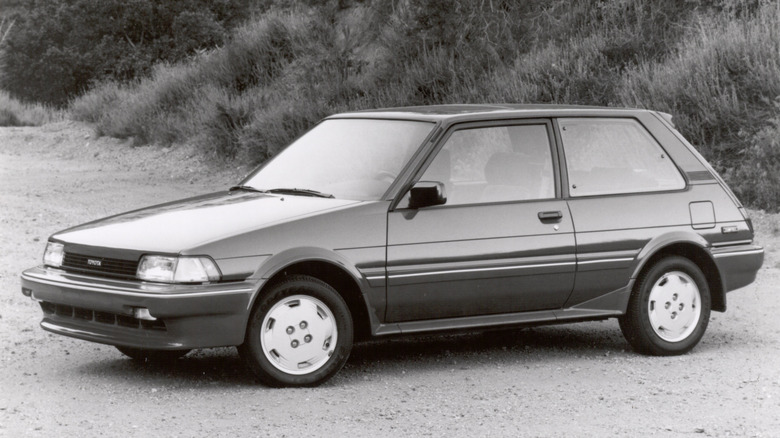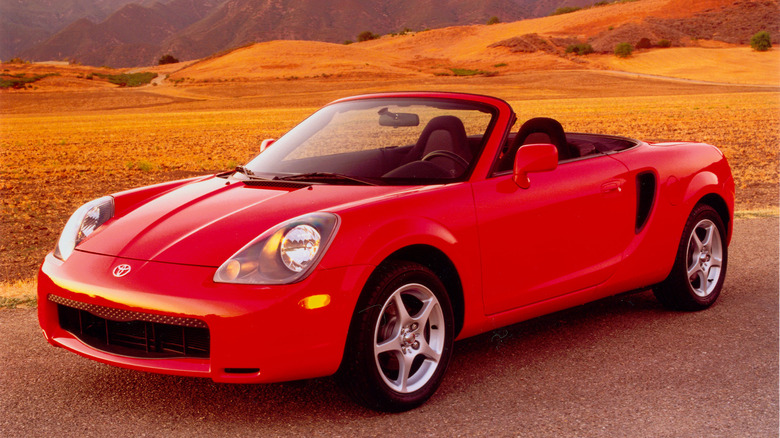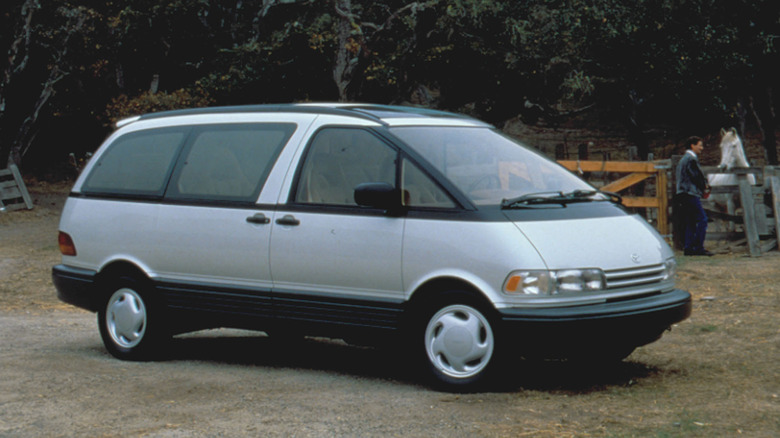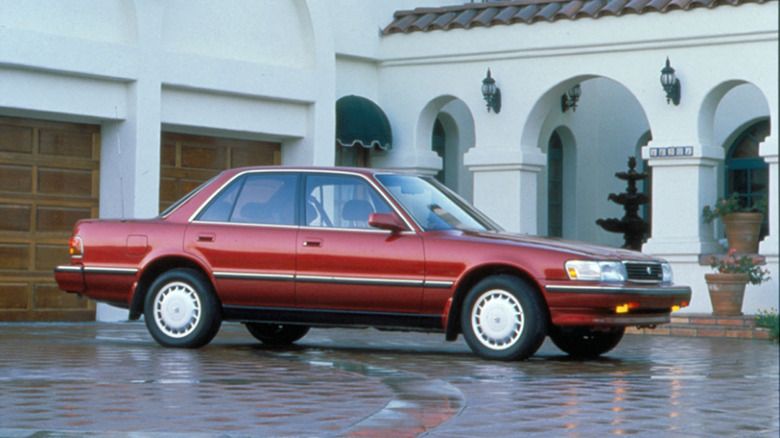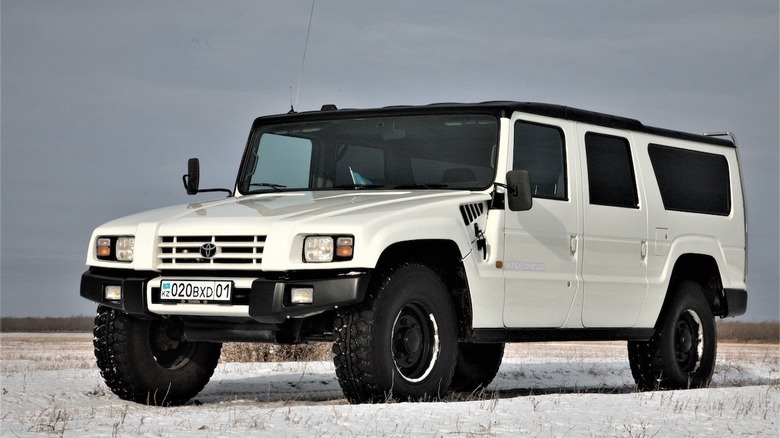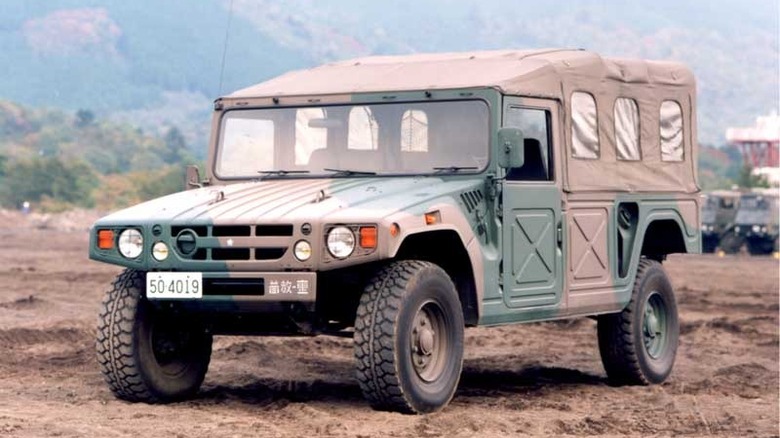8 Hidden Gems From Your Used Toyota Dealership: Here Is What To Look Out For
Want a stress-free used-car-buying experience? You should probably opt for a Toyota. The world's largest automaker prides itself on producing dependable vehicles that are easy to maintain and rarely break down. However, most will agree that the bulk of Toyota models don't ignite passion. Sure, they will last a human's lifetime, but they won't invoke a deep emotional response.
Fortunately, that's not true for every Toyota car — the company gave us cars one of the coolest JDM cars ever, the Supra MKIV, and the legendary Corolla AE86, to name a few. But with those icons being prohibitively expensive today, are there any other Toyota cars that can stir the soul without costing an arm and a leg? Can you find hidden gems at your Toyota dealership that will put a smile on your face? Indeed, you can, and this article will uncover eight secret finds worth your attention.
Not all of the listed models are cheap, though most of them are attainable. Besides, the price is justified, as each car has a unique trait that sets it apart from other used vehicles. Additionally, all of them are built to last, so you shouldn't think twice before splurging the cash. So, without further ado, let's take the covers off these Toyota hidden gems!
Toyota Celica Supra MKII (1981 to 1985)
Toyota's most coveted nameplate started its life as a higher-end version of the Celica. It actually lived two generations as the Celica Supra, with the second one being particularly interesting for budget-minded JDM fans.
The design might be the MKII Supra's pièce de resistance. It just has that "cool ride" factor, similar to cars from "Cyberpunk 2077." Sure, it's not as extravagant as the 2058 Quadra Turbo-R V-TECH, but it definitely looks very futuristic for a sports car launched in 1981. Pop-up headlights and a sharp, low front end? Yup. Simple yet astute side profile? You bet. Add a sporty, sloped rear end, and you have a sleek sports car. Let's also not forget those sharp-looking, four-spoke wheels!
But the Celica Supra MKII is much more than just a hip Japanese sports car. It has a four-wheel independent suspension tuned by Lotus, the British company famous for engineering perfect handling balance. As a result, reviewers of the era praised the handling despite it being heavier than its rivals from the 1980s. Don't worry — it is light by today's standards.
There is also a buttery-smooth inline-6 engine under the long bonnet. The 2.8-liter unit isn't very powerful by modern standards, producing only 145 hp (161 hp for later MY) and 155 lb-ft of torque, but shift that five-speed transmission on time, and you will reach 60 mph in 9.8 seconds. Still, the Celica Supra MKII is a great candidate for 7M-GTE, 1JZ-GTE, or 2JZ-GTE swaps, all of which bring significantly more power to the table. A hidden gem in the true sense of the word!
Toyota Matrix XRS (2003 to 2006)
Toyota fans have a lot to cheer for today, with the GR Supra, GR86, and GR Corolla/Yaris being a part of the "Gazoo Racing" sports car brand. But that wasn't always the case. Once, Toyota aficionados were envious of Honda's sports cars and VTEC engines. Fortunately, Toyota at least did something to address its fanbase with the Matrix XRS, a youthful and practical hatchback/minivan powered by the high-revving 1.8-liter 2ZZ-GE engine.
The naturally aspirated unit itself should be enough to convince prospective buyers to splurge the cash on a used Matrix XRS. Notably, it has a valvetrain design similar to that of Honda's VTEC. Toyota's system, called variable valve timing and lift–intelligent (VVTL-i), brings the power output to a healthy 180 hp @7,600 rpm. Yup, that is 100 hp per liter! However, the 2ZZ-GE also employed other racing-derived features, like a lightweight rotating assembly and forged steel connecting rods.
The engine is so appreciated that Lotus used it for almost two decades in its Elise and Exige sports cars, even adding a supercharger in some versions. You can also add a supercharger to your Matrix XRS, with bolt-on kits extracting up to 275 hp reliably!
Paired with a slick-shifting six-speed manual, the engine makes the Matrix XRS fun to drive. It even has that angry racing sound and customary kick when the valves lift. Besides, thanks to its height, the Matrix XRS has a relatively spacious cabin and a functional cargo area. It's a true sleeper hot hatch!
Toyota Corolla FX16 (1987 to 1988)
Continuing with the hot-hatch theme, here is another Toyota that frequently flies under the radar: the 1987-1988 Corolla FX16. It might not be the best Corolla ever — that title belongs to the yearned AE86, but it has all the prerequisites for a fun ride on a budget. It weighs less than a modern city car, has a close-ratio five-speed manual near your right hand, and a rev-happy 4A-GE engine up front with a 7500-rpm redline. Some might lament the FWD platform, but hot hatches never had an RWD drivetrain to begin with.
On the outside, the Corolla FX16 is a quirky-looking subcompact car. The rear end looks like a crookedly cut cake, and the sporty body trim on the FX16 adds little character. However, the beauty here is that few bystanders will ever know what this car packs under the bonnet. Isn't that the definition of a hidden gem? This is a car you will enjoy driving — not one you will show off. Work that stick-shift well and put the 1.6-liter engine through its paces, and there will surely be a smile on your face. The solid handling and good steering feel only add to the fun.
Like most Corollas, the FX16 is reliable, and maintaining its simple mechanics is straightforward. The 4A-GE engine also enjoys excellent aftermarket support, so adding more power won't be an issue. Not that it needs it, but doubling the stock 108 hp in a chassis as light as the FX16's is a tempting proposition.
Toyota MR2 Spyder (2000 to 2007)
Most enthusiasts associate horsepower and speed with fun. However, ask seasoned drivers, and they will tell you it is all about lightness. Lotus, one of the most successful companies in racing, built its reputation on the "Simplify, then add lightness" mantra, producing some outstanding road cars in the process. Toyota followed the same recipe with the third-gen MR2 Spyder — a car that was less powerful than its predecessors, but lighter.
The 1.8-liter VVT-i engine borrowed from the Corolla is the main reason why this particular MR2 is forgotten. Its 138 hp and 125 lb-ft of torque seemed underpowered even when the third MR2 launched. However, this economy engine propelled the roadster to 60 mph in a reasonable 7.1 seconds, courtesy of the featherlight 2,260-pound curb weight. The decision to go with this engine also means easier maintenance, fewer breakdowns, and more parts availability. Still, you can easily swap the stock engine for the 180-hp 2ZZ from the Matrix XRS and maximize performance!
Thanks to its low weight, the MR2 handles like a go-kart. It reacts almost telepathically to steering input, stops quickly, and the engine is responsive at all times. The near-perfect 47:53 (front to rear) weight distribution further helps the MR2 Spyder feel balanced in the corners. Crucially, Toyota almost eradicated the "snap oversteer" issue of the first two MR2 generations, meaning even less-experienced drivers can enjoy its full potential. If you aren't interested in winning traffic light sprints, the MR2 Spyder might be the most fun-to-drive car out there!
Toyota Previa (1991 to 1997)
Supercharged engine in the middle, and RWD or AWD options — sounds like an exotic supercar, doesn't it? The first-gen Previa is the cool minivan enthusiasts would only imagine in their wildest dreams, as it has everything a true sports car should have, plus exceptional functionality.
But the first-gen Previa wasn't born as an enthusiast car. The decision to put the engine in the middle and then add a supercharger arose from necessity. Namely, by positioning the engine in the middle, Toyota engineers opened up a ton of space in the cabin. The Previa is huge inside, with comfortable seating for seven adults and a usable cargo area. Moreover, the floor is almost flat throughout the cabin, covered by a single piece of upholstery — just like in a real van.
Toyota added a supercharger in 1994 to compete with the more powerful minivans from American manufacturers. A bigger engine wouldn't fit, so a supercharger was the quick fix. It worked, with the supercharged Previa having a respectable 158 hp for the era. Toyota also ensured that the engine was reliable and easy to maintain — first-gen Previas were very dependable.
You probably wonder how this mid-engine Previa handles corners. The answer is: fine. Reviewers of the era praised the handling balance, though the Previa is engineered to be smooth-riding rather than a precise corner-cutting tool. But that is not something a lowering kit wouldn't solve, right?
Toyota Tercel 4WD Wagon (1983 to 1988)
Volvo might be the company that keeps the off-road wagon thing alive, but in the 1980s, Toyota was the fashionable brand among adventurists with the Tercel 4WD Wagon. With a raised suspension, a special 4WD system with a transfer case, and an unconventional 6-speed manual with a reduction gear, Toyota's lifestyle wagon was a capable off-roader. It even had an inclinometer on the dashboard — how cool is that? The only thing it lacked was performance; the 1.5-liter engine produced 71 hp and 80 lb-ft of torque. As a result, 0-60 mph took 16 seconds!
What it lacked in thrust, the Tercel 4WD Wagon more than made up in functionality. Its cargo area measures 20 cubic feet (575 liters), or up to 60 cubic feet (1,700 liters) with the rear seats collapsed. Combined with the capable 4WD system, this would make the old wagon a bargain overlanding vehicle. In fact, the Tercel 4WD Wagon has an enthusiastic fanbase and good aftermarket support, so finding a lift kit or roof rack to make it even more adventure-capable isn't that hard.
Since it is based on a Toyota economy car and shares the same internals, the Tercel 4WD Wagon is a fairly reliable vehicle. It is also easy to maintain and repair — great news for tinkerers and DIYers. So, if your concept of fun is going deep into the wilderness and your budget is tight, this boxy wagon might be the perfect four-wheel companion!
Toyota Cressida (1978 to 1992)
Straight-six engine. Rear-wheel drive. Comfortable, well-appointed interior. Are we talking about a BMW or a Mercedes-Benz? No — it's the Toyota Cressida. Before Lexus was a thing, this was Toyota's answer to the German and American executive cars. Sold from 1977 to 1992 in North America, the Cressida was the car you'd buy when you wanted a buttery-smooth ride, plush cabin, and Toyota reliability.
Toyota's proto-Lexus luxury car had a lot going for it. The initial engine, for example, was borrowed from the Celica Supra MKII. Initially, it only made 116 hp, but Toyota later massaged the 2.8-liter inline-6 to 143 hp in the second-gen and third-gen models. The last, fourth generation of the Cressida received a 3.0-liter inline-6, making 190 hp. A four-speed automatic transmission, standard on all generations, was praised for being very smooth. But that was the overall mantra of the vehicle – it was designed to give passengers the calmest driving experience possible.
Although overshadowed by the appearance of Lexus, the Cressida was a true luxury car. It might not win races, but for people who value comfort and quiet, it can be a hidden sanctuary. Moreover, the Cressida is much simpler than modern luxury cars. It has no screens to distract you inside, reminding you of the laid-back life of yore. Not to mention, it is mostly mechanical and rarely breaks down, so maintenance should be a breeze. True unnoticed excellence!
Toyota Mega Cruiser (1995 to 2002)
The Land Cruiser 70 might be the first vehicle that comes to mind when you think about the most utilitarian Toyota. However, one SUV trumps all other Toyota off-roaders, and it's called the Mega Cruiser. The name perfectly describes Toyota's most capable off-roader, as it was the Japanese take on a military SUV, though it is also significant for its Hummer-inspired design. Like the Hummer, Toyota's military vehicle was also launched as a civilian model, though only 150 were made.
You could argue that Toyota stole the design of its American counterpart, but the Mega Cruiser is even more capable than the Hummer. For instance, the Mega Cruiser has a 16.5-inch ground clearance compared to Hummer's 16-inch, and it is 2 feet longer. Despite that, the Mega Cruiser weighs "only" 6,239 pounds — more than 600 pounds lighter than the Hummer.
Underneath, you'll find portal axles and three locking differentials, all customary for a true off-roader. However, Toyota also employed advanced features, like rear-wheel steering. As a result, the turning circle of the Mega Cruiser is 18.4 feet, compared to 26.5 feet for the Hummer. Meanwhile, under the sloped bonnet, there is a 4.1-liter four-cylinder turbodiesel producing 153 hp and 282 lb-ft of torque, paired to a four-speed automatic. Underpowered, sure, but the torque is certainly high enough for any off-road scenario. Besides, nobody buys an off-road SUV for speed!
How did we choose these vehicles?
Deciding whether a certain vehicle is a hidden gem can be tricky, as each person has a different view on the matter. Some value off-road prowess, others sporty driving thrills. Thus, we decided to include Toyota models of various categories and backgrounds. Still, each one had to have one thing in common: It offered something out of the ordinary. Numbers don't play a role here because they improve with time anyway — newer cars will always be faster and more economical.
Instead, this article presents you with forgotten cars that offer something unique relative to other Toyotas. In other words, these Toyota hidden gems might fly under the radar, but they have personality and offer a unique driving experience. Moreover, they are not very expensive, largely thanks to the fact that they are forgotten, even by enthusiasts. With that said, we hope this article helped you find your Toyota hidden gem!
